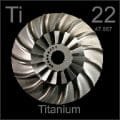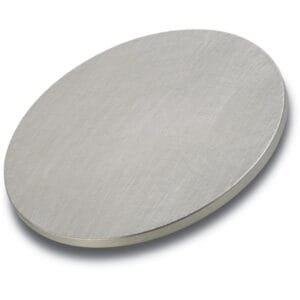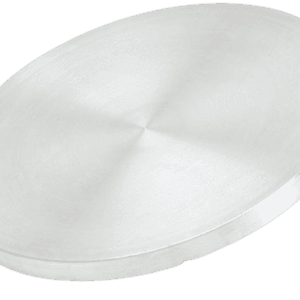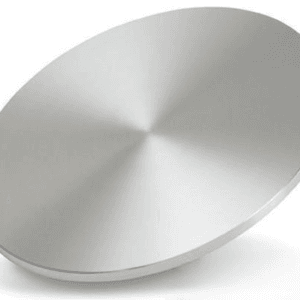Titanium Sputtering Target Description
 The titanium sputtering target, made from high-purity titanium metal, is utilized in various applications due to its exceptional properties. Titanium, a Group IV transition metal, is renowned for its biocompatibility, low density, high strength, and excellent corrosion resistance, particularly in seawater, aqua regia, and chlorine. These characteristics make it ideal for ocean liner hulls, aircraft engines, and designer jewelry. Titanium sputtering targets are widely used for CD-ROM production, decorative coatings, flat panel displays, functional coatings, optical information storage, glass coatings for automotive and architectural glass, and optical communications.
The titanium sputtering target, made from high-purity titanium metal, is utilized in various applications due to its exceptional properties. Titanium, a Group IV transition metal, is renowned for its biocompatibility, low density, high strength, and excellent corrosion resistance, particularly in seawater, aqua regia, and chlorine. These characteristics make it ideal for ocean liner hulls, aircraft engines, and designer jewelry. Titanium sputtering targets are widely used for CD-ROM production, decorative coatings, flat panel displays, functional coatings, optical information storage, glass coatings for automotive and architectural glass, and optical communications.
Titanium Sputtering Target Specification
| Material Type | Titanium |
| Symbol | Ti |
| Color/Appearance | Silvery Metallic |
| Melting Point | 1,660°C |
| Theoretical Density | 4.5(g/cc) |
| Sputter | DC |
| Comments | Alloys with W/Ta/Mo; evolves gas on first heating. |
| Available Sizes | Dia.: 1.0″, 2.0″, 3.0″, 4.0″, 5.0″, 6.0″ Thick: 0.125″, 0.250″ |
We also offer other customized shapes and sizes of the sputtering targets; please Contact Us for more information.
Titanium Sputtering Target Application
High-performance titanium sputtering materials are essential for thin film coating applications, including CD-ROM production, decorative coatings, flat panel displays, functional coatings, optical information storage, glass coatings for automotive and architectural glass, and optical communications.
Chemical Plants
Titanium’s high corrosion resistance makes it ideal for chemical equipment. Approximately 30% of domestically used titanium is employed in chemical plants.
Seawater Usage
Titanium is extensively used in nuclear and fossil power stations, particularly in large heat exchangers and condensers that cool steam from turbines with seawater. Due to its non-corrosive nature, the condenser tubes can have wall thicknesses as thin as 0.5 mm, consuming about 20% of domestic titanium.
Daily Life Applications
Titanium is increasingly found in everyday items, including sports equipment, building materials, medical applications, and accessories, accounting for about 30% of domestic consumption.
Aerospace
In the USA, around 70% of titanium production is dedicated to aerospace parts. In contrast, only 2-3% of titanium in Japan is used for aerospace, highlighting a significant market structure difference between the two countries.
Planar and Rotary Titanium Sputtering Target
Our planar titanium sputtering targets boast high purity and density, along with a uniform microstructure, making them ideal for depositing thin films in TFT displays and related industries. We offer both single and multi-piece titanium planar targets.
Our rotary titanium sputtering targets feature a high utilization rate of over 75%, ensuring efficient use of target materials.
Titanium Target Bonding Service
Specialized bonding services for Titanium Sputtering Targets, including indium and elastomeric bonding techniques, enhance performance and durability. Thin Film Materials (TFM) ensures high-quality solutions that meet industry standards and customer needs.
We also offer custom machining of backing plates, which is essential for sputtering target assembly. This comprehensive approach improves target design flexibility and performance in thin film deposition. Our channels provide detailed information about bonding materials, methods, and services, helping clients make informed decisions.

Titanium Sputtering Target Packaging
Get Contact
TFM offers Titanium Sputtering Targets in various forms, purities, sizes, and prices. We specialize in high-purity thin film deposition materials with optimal density and minimal grain sizes, which are ideal for semiconductor, CVD, and PVD applications in display and optics. Contact Us for current pricing on sputtering targets and other deposition materials that are not listed.





Reviews
There are no reviews yet.